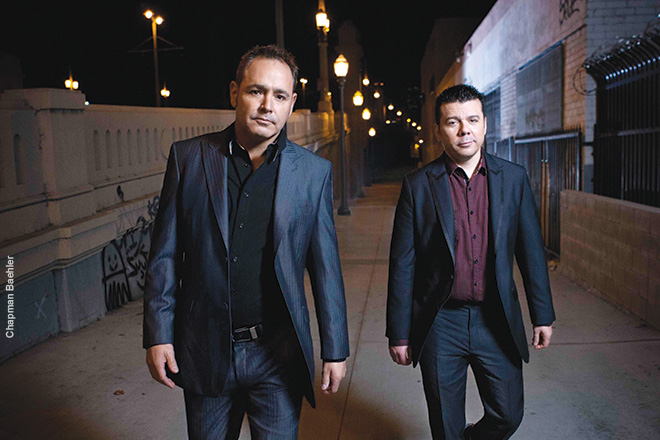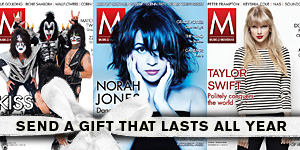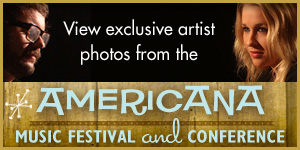THE CRSYTAL METHOD
Celebrating 20 years together with TV, radio and recording projects
Electronic music duo the Crystal Method—Scott Kirkland and Ken Jordan—is hitting a series of milestones at once. They’ve been together 20 years, they’re about to release their fifth studio album, their weekly SiriusXM radio show, Community Service, is approaching its 100th episode—and they’re the musical masterminds behind the score of J.J. Abrams’ new TV show, Almost Human. “We normally turn out about 12 songs every three or four years,” says Jordan, “and now we’re doing 30 short songs a week.”
That impressive output comes in addition to the 11 new songs on their latest record. It seems like a deluge of new material, but the pair had intended to spread things out. Originally planned for release in the spring of 2013, the album was delayed when Kirkland had surgery to remove a benign cyst on his brain. What should have been a speedy recovery became complicated by a post-surgical infection that put Kirkland out of commission for several weeks.
But the delay provided the duo an opportunity to make some musical changes. “If you give us more time, we will change everything,” says Jordan. “We pretty much reworked everything and finished up a couple of extra songs. And it ended up being better for the album.”
The self-titled project was recorded in Crystal Method’s L.A. studio, Crystalwerks, using a combination of the latest digital technology and vintage analog synthesizers. No strangers to collaboration, the duo tapped a number of guests for the new record including Dia Frampton, Nick Thayer and LeAnn Rimes.
How is Scott doing?
He’s great—fully recovered. It was supposed to be a short recovery, and although the surgery went well, he got the infection. And that ended up being more serious than the original problem. We just put everything on hold for a while until he was completely better. But he’s back to normal, and there’s no chance of any further problems down the line.
Had you nearly finished the album?
Yeah, we were really close. We thought he was going to be out for a week or two, and because the album was going to come out we had a bunch of summer festival dates we’d planned to do. We ended up having to push everything back.
Do you write with collaborators in mind?
Generally we get a track going, and then we’ll know, “This could use this kind of vocal or this kind of guitar.” But with our new single, “Over It,” we knew we wanted to work with Dia Frampton, and we gave her some feedback. We told her we’re looking for not a whole song, but maybe just some song elements. She sent us this thing that was basically her on acoustic guitar—and we loved it. So we worked from that. The genesis of that song came mostly from her.
How did you work with LeAnn?
She was a part of the film Re:Generation, which we were also in. We really liked her voice and what she did in the film. Her voice is a little unnatural-sounding in the song she did with Pretty Lights. But if you see the film, she’s singing this amazing falsetto part in the studio, and we knew she was an amazing vocalist. Then she and Scott had a chance meeting on a flight, and he gave her an early version of “Grace.” She really liked it and wrote some lyrics for it, and we just went from there. She came to our studio and laid down the final vocal, and we finished it. LeAnn is an incredible singer. We got to see her perform at Belly Up in Aspen recently, and she can really do anything. She should do the Ray Charles thing and just select a style of music and do a whole album that way. Plus, she’s great to work with.
Where do you get your inspiration?
This is just what we love to do, so we have the permanent inspiration to make the music we do. We’re not lyricists—we get inspiration from current events, but it doesn’t really translate lyrically into our music. So we’re generally inspired by making music we like. We just love working in the studio, playing with new toys and new gear that we get. It’s still just a lot of fun for us to make music.
Has your gear changed over the years?
We still use and purchase analog synths and other vintage gear. The good parts of technology have just gotten better and better. Simple things like affordable storage and faster computers have helped a lot, and we fully embraced that. We embraced all the plug-ins and the software. At the core, we still make records the same way, but we do take advantage of newer technology.
What gear did you use on the album?
We use Ableton Live for a lot of composing and getting things together before we move it to Pro Tools, which we use as our main rig. We used the ARP Odyssey, the ARP 2600. We used a Memorymoog a lot, as well as Juno-106, Jupiter-8, Jupiter-6 and Korg MS-20 keyboards. We had a lot of fun experimenting with the Casio XW-G1 keyboard and triggering stuff on the iPad app. The Casio XW series sounds great, plays well with others—particularly iPads. We also use plug-ins by Universal Audio, Arturia, and FXpansion, specifically Geist and a lot of their synth plug-ins.
Use any interesting samples?
Those are actual police scanner samples on “110 to the 101” that we recorded like a decade ago. We had an assistant record a bunch of stuff, but never got around to checking them out until recently. We just found a couple of amazing ones that we had to use. It’s nice to go back and listen to what we have after a while. We still have some really cool things that will be used for future records.
How are you celebrating 100 episodes of Community Service? Will you release compilations?
We’re going to do an event at the SiriusXM Studios in New York. We’re going to play a lot of the new album and some other stuff. I like doing the compilations, but apparently nobody buys mix CDs anymore. It costs more to license the tracks than it would to sell. But I like doing them. I guess in lieu of that we’ll have our mix show on the radio every week.
What was it like working on the Fox series Almost Human?
We work on the episodes so far in advance that we never see the final product until it airs, so it was kind of fun to see little changes here and there. Not major things—a lot of finished computer-generated graphics. There was a thing in last night’s episode where you saw a head. When we scored it, it was a guy’s head. Last night when it aired, it was a girl’s head. Then somebody texted me and said that the girl’s head is mixed martial arts movie star Gina Carano.
How different is scoring for TV?
It is a different process. A lot of the core things we do don’t change, but the inspiration and motivation is completely different. We’re trying to score to a picture. Part of that is liberating compared to making music for your own album because a lot of the work is already done before you start. That part of it is a bit easier. But the deadlines are tough. We’re basically doing 30 cues every week.
–Amanda Farah




comment closed